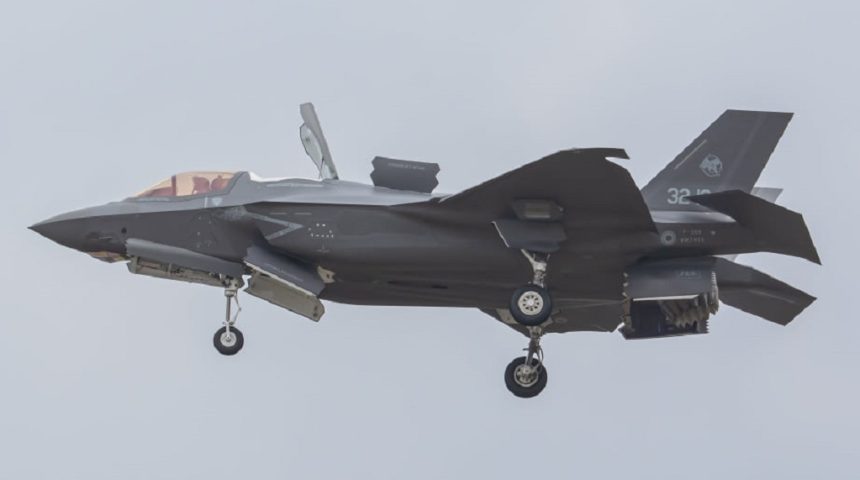BL-5 is the fifth Italian F-35B, and the second destined to the 32° Stormo (Wing).
On Mar. 9, 2022, the F-35B BL-5, the fifth STOVL (Short Take Off Vertical Landing) aircraft assembled in Italy, at the FACO (Final Assembly and Check Out) facility, in Cameri, carried out its maiden flight. The aircraft, which received the code 32-18 and serial MM7455, is the second F-35B to be assigned to the 32° Stormo (Wing) of the Aeronautica Militare (Italian Air Force).
As happened for the test flights of the other F-35s, a single Eurofighter 2000, belonging to the 51° Stormo, accompanied the fifth generation aircraft as safety chase. The images in this article, provided by our friends from BestShotAircraft, show the F-35B flying an approach in STOVL mode. As we previously reported, the program calls for six test flights, including one in STOVL mode, before the jet is delivered to the customer for acceptance.
As often explained here at The Aviationist, the Italian Government is currently procuring 90 F-35s, 60 of those are F-35As and the remaining 30 ones are F-35Bs. Out of those 30 F-35Bs, 15 will go to the Navy and 15 to the Air Force. The Lightning II will replace the Navy’s ageing AV-8B+ Harrier II and will be embarked on the Cavour aircraft carrier and the new LHD Trieste. It is not completely clear, however, where the F-35s will be land-based.
In recent months, the Navy and the Air Force worked in full synergy for the development of the national ability to project the potential offered by the new fifth generation aircraft from the sea and from the ground, operating jointly in operational situations where suitable landing strips for conventional aircraft are not available. Notable are the first landing of the F-35B of the Italian Air Force on the Italian Navy ITS Cavour aircraft carrier and the joint training of both services on Pantelleria island.

“The goal is to achieve an expeditionary capacity both from land and from sea [aircraft carrier] by using the F-35B assets of the Navy and the Air Force in an integrated and synergistic manner, in compliance with the prerogatives of the Chiefs of the Armed Forces. There will be increasingly profitable synergies that will allow a unified use of the STOVL capacity: depending on the domain, the F-35Bs will be put under the operational control of one or the other service, always responding to the Joint Chief of Staff”, Adm. Cavo Dragone said in that occasion.
Italy will not adopt the British model, meaning that there won’t be a Lightning Force with a joint Squadron equipped with F-35Bs jointly flown and maintained: the Italians aim at a “joint capability” with the Italian Air Force and Navy operating their own aircraft in their own units. However, when needed, the F-35Bs of both services will integrate and operate under a single chain of command from land-bases or from an aircraft carrier or landing helicopter dock (like the LHD Trieste that will be ready to accommodate the aircraft next year) by means of a TOA (Transfer Of Authority).

Overall, the Aeronautica Militare and Marina Militare will operate 15 F-35Bs each: the Air Force will use the Lightning II to replace the AMX (that is going to be retired this year), while the Navy will use the 5th generation aircraft to replace the AV-8B+ Harrier II (whose retirement is planned for 2024-2025, by the time the naval service will be equipped with at least 8 F-35Bs).










